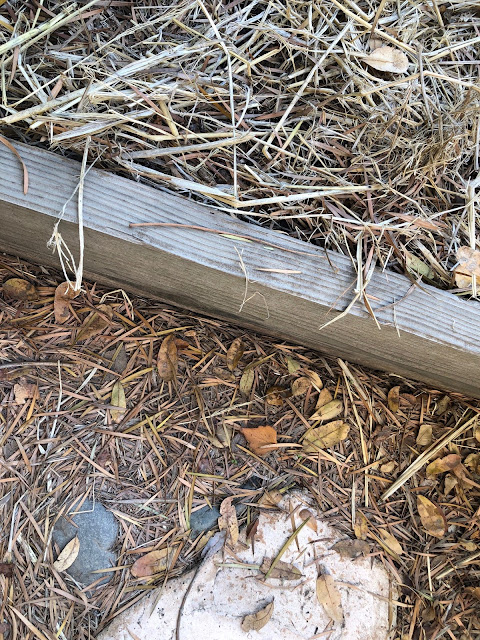
|
|
So ... where's the soil? The good stuff is under
organic mulch (the straw). The raised bed and the steps
help prevent compaction. (Photo: Kathy Morrison)
|
California is celebrating Healthy Soils Week through Saturday, a seemingly odd time of year for such a celebration. Many farms are fallow and many gardeners are less active because of colder weather and the press of holiday demands, even during a pandemic.
But that same lack of activity means it's easier to focus on what's underground, rather than what's growing. (Also, this Saturday, Dec. 5, is World Soil Day, a nice pairing.)
The California Department of Food and Agriculture, with many partners including the UCCE Master Gardener Program, put together
a whole week of webinars and videos
suitable for all of us stuck at home for the duration.
Why are healthy soils important? Here's the CDFA's short answer:
-- Improved plant health and yields
-- Increased water infiltration and retention
-- Sequestered carbon and reduced greenhouse gases (GHGs)
-- Reduced sediment erosion and dust
-- Improved water and air quality
-- Improved biological diversity and wildlife habitat
For home gardeners, the single best offering during the week's events is the presentation of "Tips to Keep Your Garden Soil Healthy." It was presented live this morning but was recorded and is
on YouTube here
. The 1-hour talk is an easy listen with Dustin Blakey, the Inyo/Mono counties' farm adviser and master gardener program coordinator.
Blakey notes that some gardeners don't add much to their soils, but a huge percentage load up their soils with excess amendments and nutrients, trying to find the perfect "recipe" for, say, their tomatoes or their cucumbers.
"Focus on improving garden soil, and don't fuss about a single crop," he advises. And know your soil: learn its texture, smell, pH and its "interesting characteristics" such as rocks or hardpan, he says. Every soil has some defects, the trick is learning what they are and how to work around them.
A cool research tool for gardeners is the
SoilWeb
, an interactive map hosted by the UC Davis website. Using this tool and my address, I learned that most of my neighborhood is soil #229, or Urban Land-Xerarents-Fiddyment Complex. Urban land is easy to figure -- lots of roads and homes here. Xerarents, I discovered, form in fill material mixed by grading and excavation activities, including agricultural activities. These two components make up 70 percent of the land around me, so the soil was pretty chewed up when my neighborhood was built 50 years ago. All the more reason to work on its health.
Blake offers these general tips on aiding soil's health. Do check out his presentation for more details, and the question-and-answer session at the end.
1) Designate permanent paths in the garden. This limits the soil compaction. Raised beds especially help this, since the gardener and other humans are less tempted to walk or stand in them.
2) Treat the garden bed like an actual bed! No walking (or jumping) on it. Keep it tidy (by pulling weeds). Keep it "made up" by covering it with organic mulch.
3) Add organic materials to the soil. Amendments,
compost
and cover crops all do this. The benefits: Sandy oil will hold onto nutrients. Clay soil will loosen up. It will improve the "soil web" for beneficial microbes. And generally the soil will be more "resilient," requiring less micromanagement, Blakey says.
4) Practice crop rotation, including cover crops. A concise explanation of crop rotation can be
found here
; also see
a chart of all the plant families
. Cover crops can be legumes, such as bell beans or red clover, or grasses, such as rye, or a combination. Blakey says he grows sweet potatoes as a kind of cover crop to keep weeds down.
5) If you must till the soil (you don't have to!), do it gently. The soil structure and soil life still will be disturbed, but using just a shovel, for instance, instead of a gas-powered rototiller will be much less harmful. Don't till the soil when it's wet. And do incorporate some organic matter to help mitigate the disturbance.

